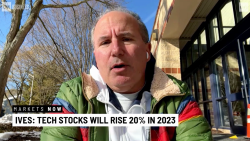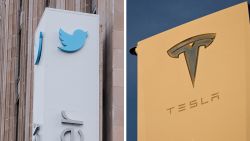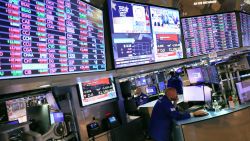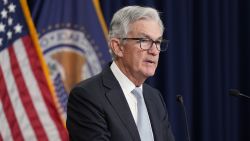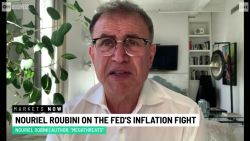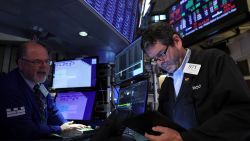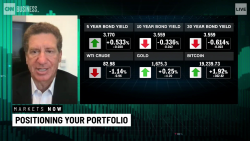The S&P 500 is supposed to be a broad representation of the US economy. So if you’re plowing money into an index fund, you might think you’re doing a good job of diversifying your assets.
You’d be wrong. These days, it’s basically the S&P 5.
The five largest companies in the S&P 500 (SPY) – all tech companies – account for nearly 20% of the market value of the entire index. Apple (AAPL), Microsoft (MSFT), Amazon (AMZN), Google owner Alphabet (GOOGL) and Facebook (FB) are collectively worth $4.85 trillion. The S&P 500 (SPY) has a market value of around $26.7 trillion.
This could be a big problem for investors who are planning for retirement or other long-term goals who don’t understand the risks of having all their proverbial eggs in one basket.
The last time the S&P 500 had such a high weighting in a single sector (tech) was right before the dot com bubble burst in 2000, according to Tocqueville Asset Management portfolio manager John Petrides.
“Diversifying your assets is Investing 101. Spreading investments across various asset classes, stocks, regions, credit, investment type, is the one way investors can compensate for not having a crystal ball to predict the future,” Petrides said in a report.
Two top techs worth more than four entire sectors
Petrides is especially concerned that the two largest companies in the index – Apple and Microsoft – each have a higher weighting in the S&P 500 than some industries.
Apple and Microsoft each make up about 4.5% of the S&P 500’s market value. That’s higher than the weightings for the energy, utilities, real estate and basic materials sectors.
“Buying the S&P 500 Index fund today is like buying a used car without opening up the hood and taking it for a ride….do you really know what you are buying?” Petrides said.
When investors start to overload on one sector, that usually does not end well. Petrides said in an interview with CNN Business that it’s essentially a following the herd mentality. And he’s worried that valuations for top stocks are now too high.
Petrides pointed out that in addition to the high weighting for tech in 2000, financial stocks were a disproportionately large part of the index in 2007 just before the demise of Lehman Brothers and the Great Recession. Energy stocks also had an unusually high concentration in 2008 before oil prices plunged.
“The current sector concentration is not a forecast of impending doom, but rather a wake-up call for investors to be aware of the potential risk being taken by simply ‘owning the market,’” Petrides said in the report.
Investors who still want texposure to the broader market can look for other funds and ETFs that own the S&P 500 companies – with a twist.
Other index ETF funds lag the S&P 500
Money management giant Invesco, for example, has a S&P 500 Equal Weight ETF (RSP). As the name implies, the fund takes all the stocks in the index and weights them equally.
And there’s another ETF that turns the index on its head. Exponential ETFs manages the Reverse Cap Weighted U.S. Large Cap ETF (RVRS), which puts the highest weightings on the smallest companies.
Unfortunately, both funds have lagged the performance of the S&P 500 Index over the past few years. While weighting stocks equally in a portfolio might make some inherent sense, it’s hard to outperform the broader market when one sector is outpacing all the others.
The strategy of putting more money into smaller S&P 500 companies seems fundamentally flawed. The Reverse Cap ETF currently has top weightings in struggling retailers L Brands (LB), Gap (GPS), Nordstrom (JWN) and Macy’s (M). The reason they have smaller market values? Their stocks have all plunged over the past year.
With that in mind, investors may need to grin and bear it when buying a regular index fund. Yes, you have significant exposure to a quintet of tech firms. But the members of this Fab Five have justified their solid stock performance.
“Having this much in tech is a concern that shouldn’t be ignored. There are comparisons to the late 1990s. But we need to realize that these companies are achieving better-than-average revenue and earnings growth in a growth-starved world,” said Timothy Chubb, chief investment officer at Girard.
Chubb added that market cap weighting is a better option than ranking stocks in an index by share price, as the Dow does, especially considering what it’s top rating is: Boeing (BA), which is down 15% in the past year amid the grounding of the 737 Max almost a year ago.




